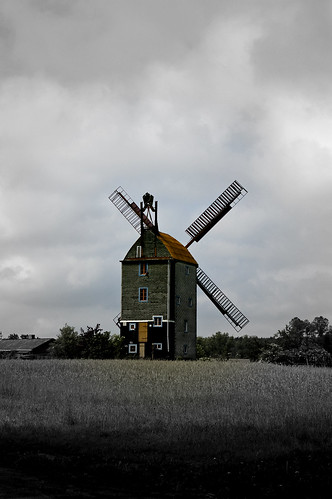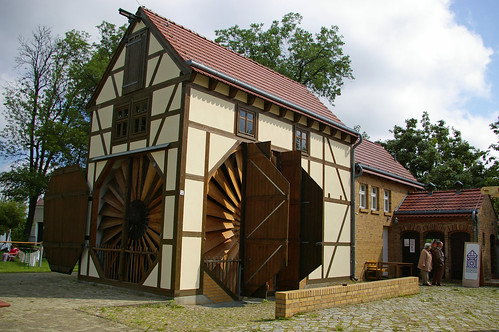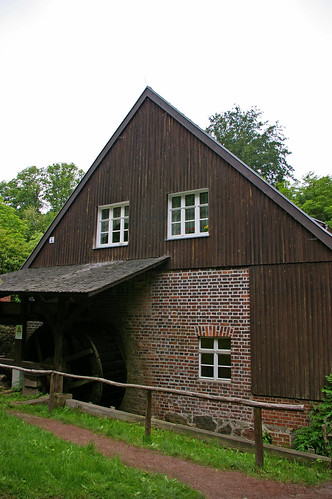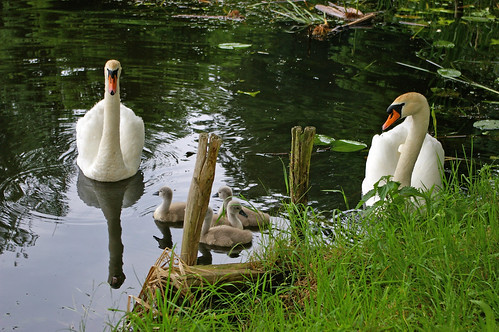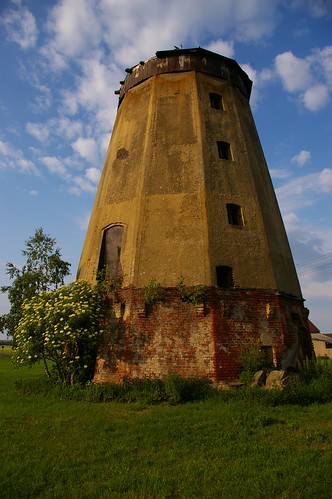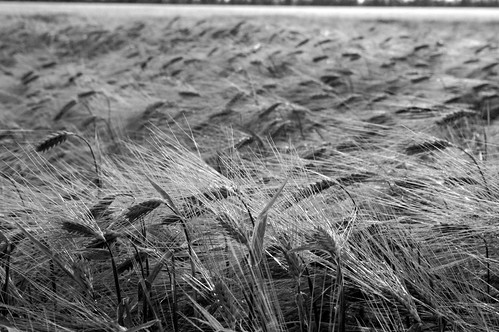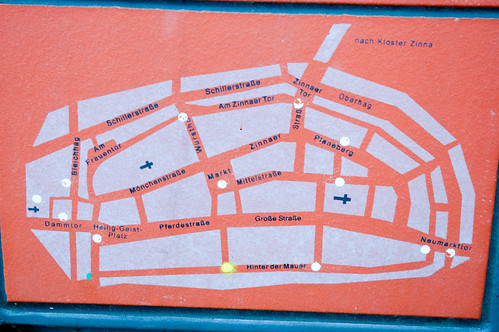 City Map (notice it’s round like the city walls)
City Map (notice it’s round like the city walls)
June 6,2009 – I took a day trip to Jüterbog. It’s not too far from where I live but is a very cool place because it retains its full city walls from the middle ages. It turned out to be very gray and rainy in the afternoon, but it was a decent bike ride (after the train trip down) anyhow because it was a warm rain.
More information is at: en.wikipedia.org/wiki/J%c3%bcterbog But the summary (interspursed with my pictures) is:
First mentioned around 1000 as a town, The town is surrounded by a medieval wall including three gateways and barbicans.
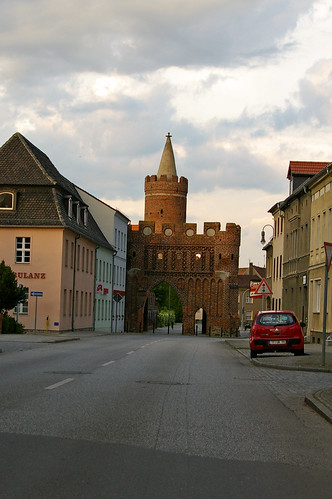
Dammtor gateway Exterior

Dammtor gateway Interior which would have been used as the militia rally/training point it was literally right outside the main city gate towers below:
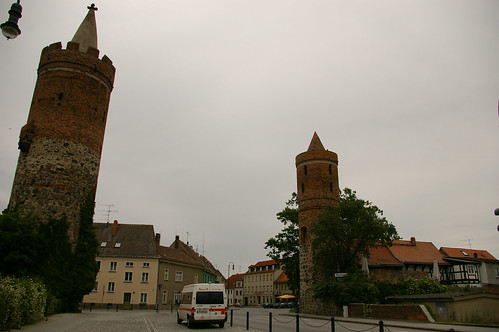
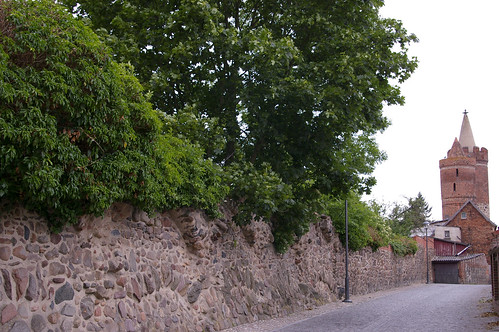
The old city walls – about 8 feet high – looking back to the gate

Intact Watch tower along the city walls
Jüterbog encompasses two Protestant churches, of which Gothic St Nicholas’ (14th century) is remarkable for its three fine aisles and features a preserved coffer (chest) of Johann Tetzel, and original paintings.
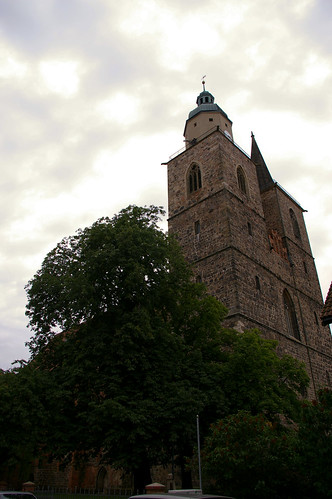
St Nicholas’s Church – Juterbog was First mentioned in 1307, back then it was a Romanesque basilica. The church today is a gothic hall church – built in 3 stages which can be seen in the ground plan.
First stage – The long nave between the slanting outer pillars (1330 – in black)
Second stage – lengthening to the west, a cross beam, and the west end (1440 – grey)
Third stage – alteration of the alter apse and building of the ambulatory (1488 – light grey)
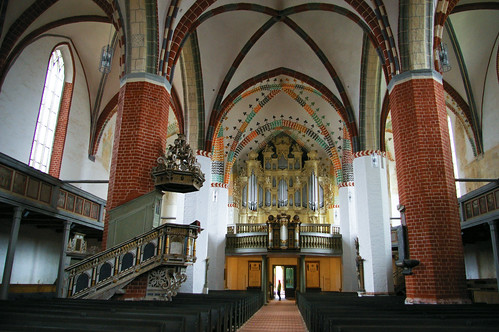
Inside – looking back toward organ
The building of the towers were not finished before the beginning of the 16th century. The different tops are due to the circumstances that the spire of the northern tower was knocked down by a thunderstorm in 1560. After that, the octagonal construction was built by taking the 30 unused altars of the catholic time as material to create room for the watch man. This baroque top was put on in the year 1617 and still adorns the northern tower.
The church survived the conflagration in 1478, The Thirty Years War, the occupation of the town by Prussia rom 1756 to 1763 in the Seven Years War, and the first and second world war almost unharmed – unlike the town and residents.
Inside, You will find a famed Madonna and Child from the 1500’s, and a statue of a black St. Maurice from the 1400’s.
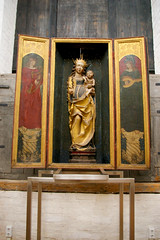
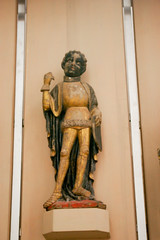
and a whole set of other states that are hand carved from the 16-1700’s
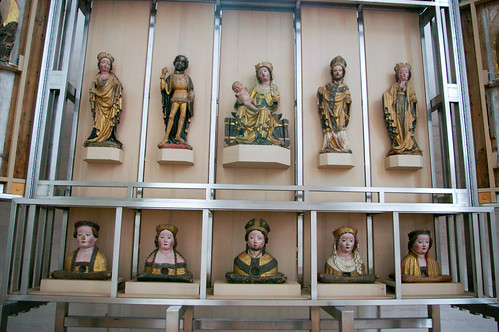
Most Impressive, however, is the original side chapel – with original Painting (you need to go to flickr to see more of these) which are dark b/c of NO FLASH allowed:
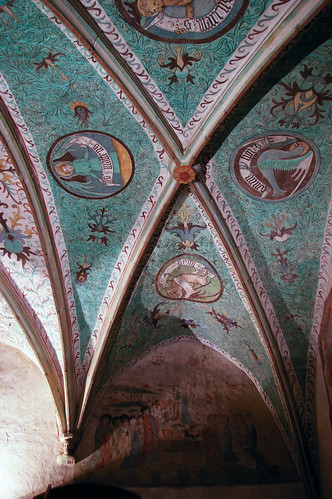
Tourquoise Roof With Angels

Pilgrims to the Holy Land
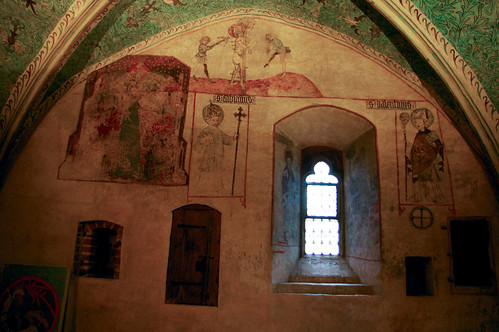
Saints
Jüterbog carries on weaving and spinning both of flax and wool, and trades in the produce of those manufactures and in cattle. Vines are cultivated in the neighborhood.
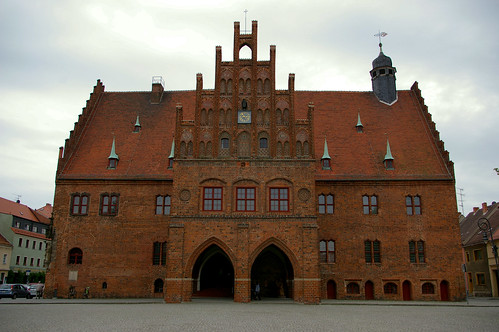
Town Hall (built for the trading of flax, wool and coal).
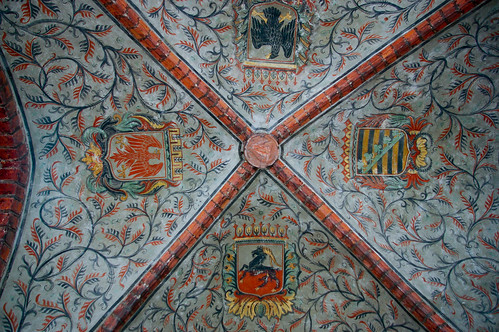
Town Hall Ceiling
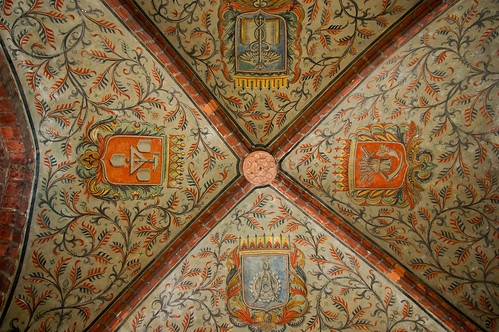
Town Hall Ceiling 2
That’s it from Jüterbog, but be sure to check out more of the set here.

